By Admin
Posted in Uncategorized
Flat tires can happen at any time and can make you feel helpless. But if you are armed with some information and quick fixes, you should be back on the road quickly.
If you notice that your tire is flat but still has some air in it, you might be able to fix it with a tire patch as long as the hole is not in the sidewall. You should never drive on a tire that is more than ten pounds low on air. If the leak allows the rest of the air out, you could end up driving on the rim, which will cause damage. So what should you do when it seems like your tire is low?
Jack the vehicle up using the jack points closest to the tire. Slowly rotate the tire to find the problem. If you don’t see an object sticking out of the tire or a hole, there’s a trick to discovering the leak. Make a mixture of liquid soap and water.
As you brush the water on the tire, the mixture will create bubbles where the hole is located. If you mark the hole with chalk or white shoe polish you can easily find it again.
If the hole was caused by a nail or screw and is small, you can plug the tire, but larger holes will need to be patched. A tire plug kit contains two T handles: One has a point and a rough shaft and the other has an “eye” at the end of it.
Air the tire up to about five pounds over the recommended pressure. Next, thread a plug through the eye on the smooth-shafted T handle. Insert the T handle without the eye into the hole in the tire. Push it in and pull it out three or four times. Remove the T handle and then push the plug-loaded T handle into the hole in the tire so that the plug is all the way inside the tire. Pull the T handle out. The plug will stay in the tire and will be visible.
While you can patch a tire yourself, it may be better to bring your car to a tire shop. You must first remove the tire to install the tire patch and then remove the tire from the rim. While it’s possible to do this yourself, it can get pretty complicated.
You must first remove the tire to install the tire patch and then remove the tire from the rim. While it’s possible to do this yourself, it can get pretty complicated.
If the hole is too big to plug, you shouldn’t try to drive. A hole that’s big enough for a patch will leak quickly. The easiest and best thing to do to avoid damaging your rim is bring the tire to a tire repair center.
If you must drive the vehicle, remove the damaged tire and wheel, and install the spare. If you have another mode of transportation, remove the tire and wheel, and bring it to a tire repair center so it can be repaired safely.
You can drive for many miles on a plug or patch, however, if you notice another leak it may be time to head to a service center. If you need a second tire patch, the tire is ready to be replaced.
Safety is always the number one priority. A tire patch can help with a small leak, but if more than one is needed, it’s time for a replacement.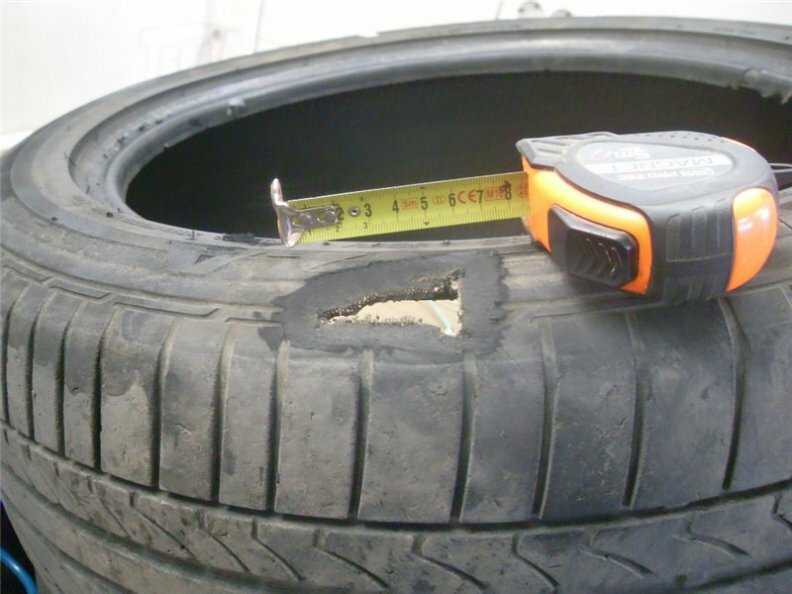
Every editorial product is independently selected, though we may be compensated or receive an affiliate commission if you buy something through our links. Ratings and prices are accurate and items are in stock as of time of publication.
Modern vehicle tires are tough, standing up well to rough terrain and thousands of miles of driving. Trouble is, tires are not invincible. Every so often car tires spring leaks. Air can start leaking from anywhere on a tire, and the location of the leak determines whether or not you can fix it yourself. And if you can't fix it yourself, the location of the leak will also tell you if you need a professional repair or a new tire.
Whether or not your tire is tubed or tubeless affects things, too, because only tubeless tires can be repaired using the technique of plugging that we'll show you here. The good news is that modern vehicles always have tubeless tires, and this means that repairing with a rubber plug is often an option.
The good news is that modern vehicles always have tubeless tires, and this means that repairing with a rubber plug is often an option.
Plugging a tubeless tire is only a possibility when your puncture is in the tread area. If the air leak is where the sidewall of the tire meets the rim — this is called a "bead leak" — you'll need to visit a mechanic with a tire machine to dismount the tire from the rim and remount it with sealing liquid applied to the bead. If your sidewall has been punctured, you need a new tire, because damage there can lead to a blowout at highway speeds, even after repair.
Learn exactly how to plug a tire so next time you spring a leak between your treads, you'll be able to get up and running again in record time.
Total time completing the repair is about 15 minutes. Doing the work yourself will save you about $20 and the time spent driving to the garage and waiting.
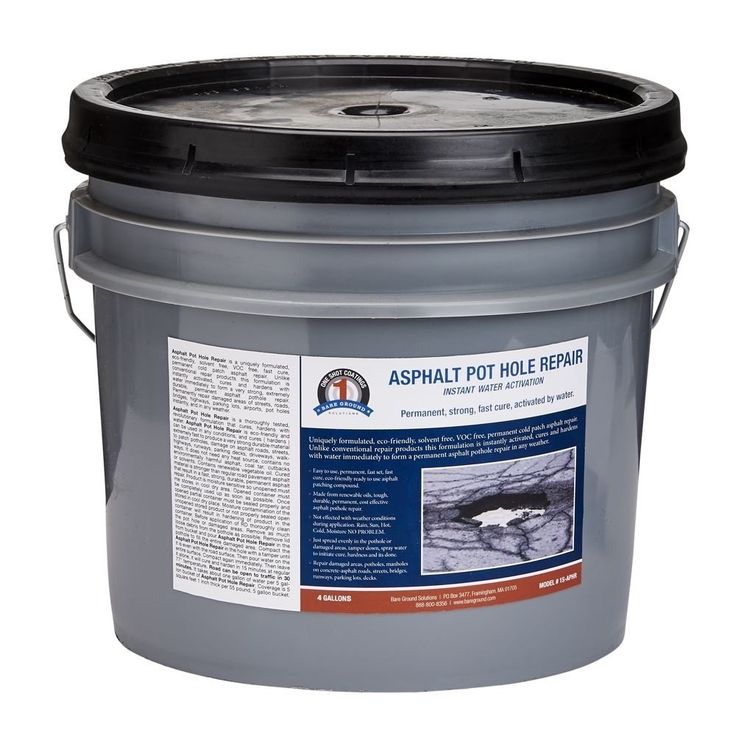
Steve Maxwell for Family Handyman
Complete DIY projects like a pro! Sign up for our newsletter!
Do It Right, Do It Yourself!
Originally Published: August 27, 2020
Today, car dealers offer various repair kits for both tubeless and tubed tires. In our review, we will consider the best car tire repair kits.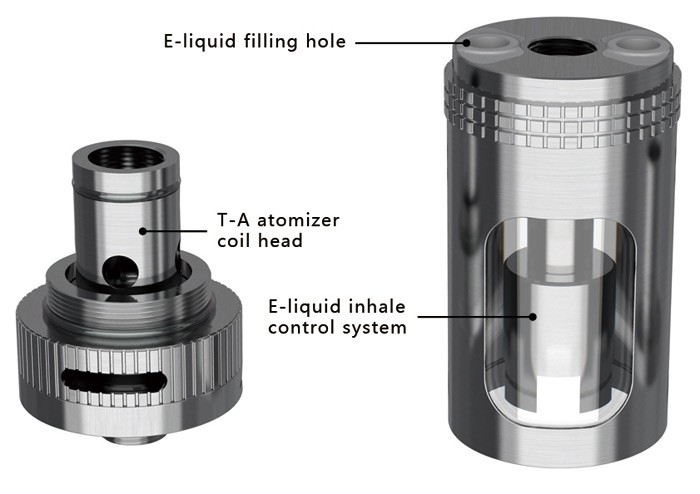
These kits include a standard set of items:
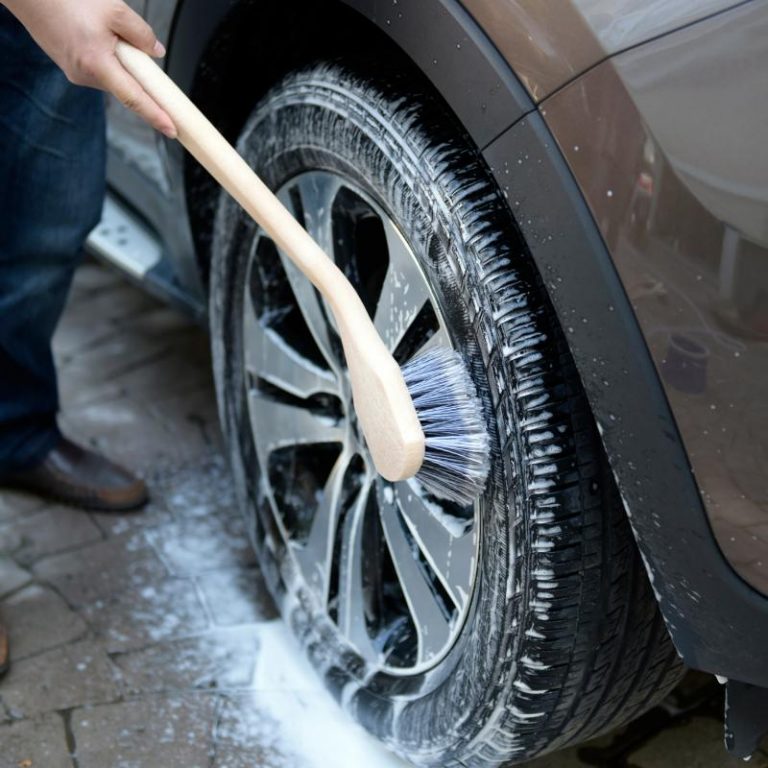
From different manufacturers, you can also find files for cleaning the rubber surface, a pressure gauge for checking the pressure in it, and spools in the kit.
Russian company's kit for repairing damages in car tires as a result of screws, nails, etc. getting into them. Designed for repairing tubeless tires. The kit helps to eliminate a puncture in rubber with a diameter of up to 6 mm.
Pluses of the set:
Cons of dialing:
Made in China.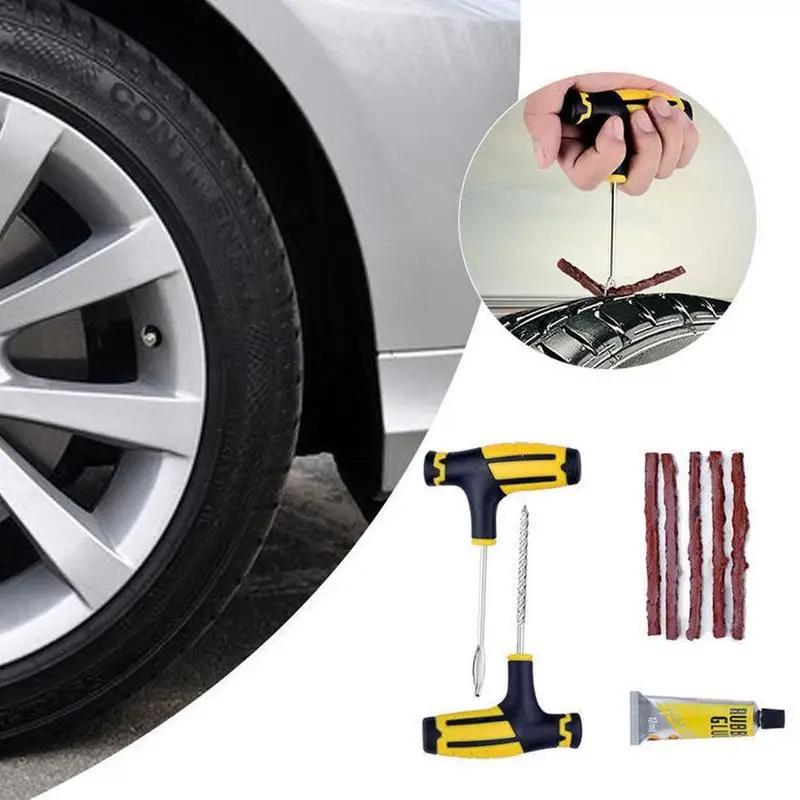 It has a very affordable price and a nice packaging design. With it, you can quickly and effectively close a hole in the tire. Effective adhesive holds the tourniquet firmly into the hole.
It has a very affordable price and a nice packaging design. With it, you can quickly and effectively close a hole in the tire. Effective adhesive holds the tourniquet firmly into the hole.
Using a similar product, you can repair a hole in the rubber without removing the wheel from the car. Working time - 5-7 minutes.
Pluses of the set:
Cons of the set:
This German brand product is made in China. The set includes standard items for such a product: a rasp and an awl, glue and 5 tourniquets.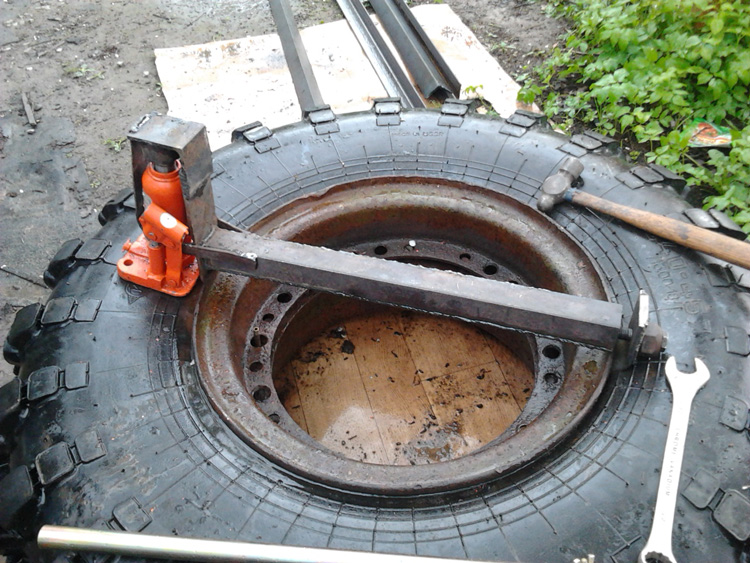 The small size of the repair kit: 320x180x30 mm and weight 220 g allows the motorist to place the kit in any corner of the car.
The small size of the repair kit: 320x180x30 mm and weight 220 g allows the motorist to place the kit in any corner of the car.
Kit plus:
Cons of the set:
Similar kits can be used to eliminate punctures not only in car tires, but also in motorcycles.
Another “made in China” kit that pleases car enthusiasts with its affordable price and benefits. Its use will allow you to do without the costly call of a tow truck or the cost of tire fitting services.
Transparent plastic package contains everything you need to repair a tire: rubber bands-inserts (5 pcs.), glue and tools.
Pros:
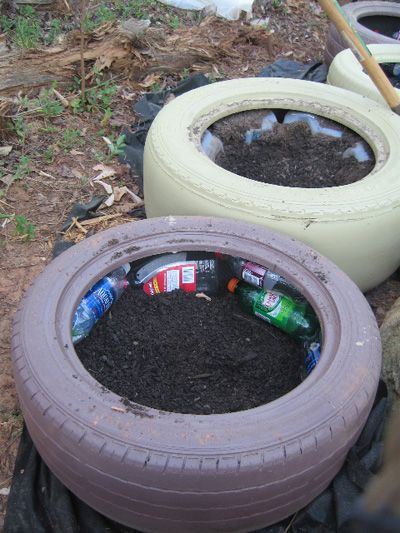
Cons of dialing:
In practice, a wheel repaired in this way will not bother the driver for a long time.
Products of the American company RunWay, whose production facilities are located in Russia and China. Raw rubber, from which the harnesses are made, effectively fills the puncture space by self-vulcanization. In addition to it, the kit includes a rasp, an awl and glue.
Kit pluses:
Cons of the set:
Motorists unanimously claim that such a set is necessary in the car.
Various repair kits are used to fix damage to tube tires. Some include raw rubber patches, sandpaper and glue, while others include a set of mushrooms: rubber patches with legs.
Some include raw rubber patches, sandpaper and glue, while others include a set of mushrooms: rubber patches with legs.
This Russian brand tire repair kit includes two sets of raw rubber patches (6x round) and 2x rectangular shape, as well as glue and sandpaper. Using sandpaper, the puncture area is cleaned, then a patch corresponding to the size of the hole is selected and glued to the damaged area.
Pluses of the set:
Cons of dialing:
In this way, you can patch a hole in a car, bicycle or motor rubber.
An effective tool for the repair of tube and tubeless tires is the fungus kit of the American company X-Tra Seal.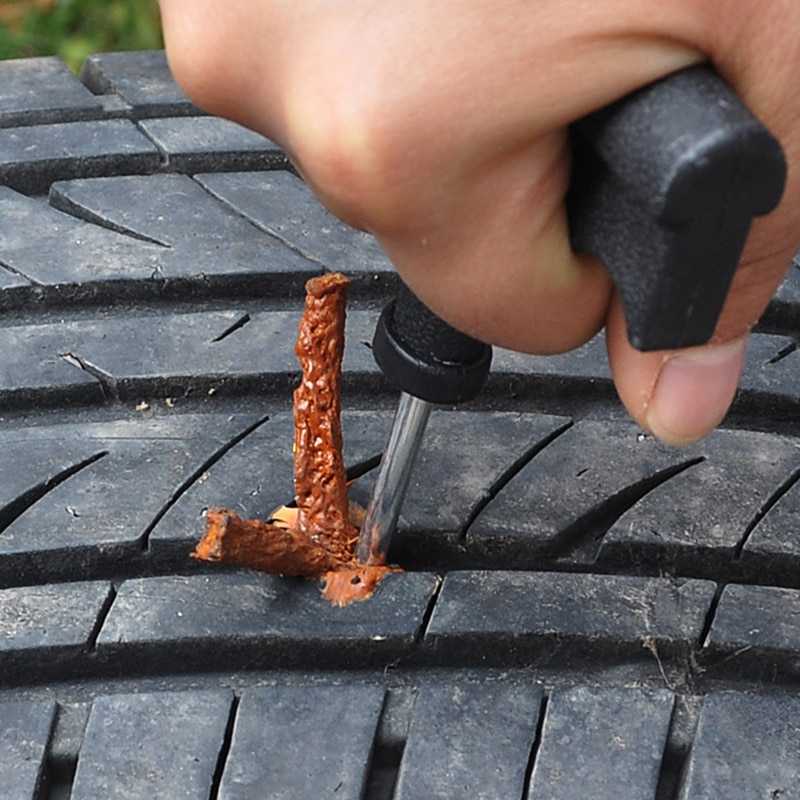 With its help, it is possible to carry out high-quality repair of tires on the running and side parts.
With its help, it is possible to carry out high-quality repair of tires on the running and side parts.
The 55 mm diameter of the cap allows you to repair damage of a fairly serious size. The leg length of 55 mm makes repairs convenient and fast.
Advantages of the set:
Cons of dialing:
It must be remembered that such patches can be installed on the tread and sides of all passenger cars. The exception is high-speed tires of the H index and with a higher value: in this case, the fungi are placed only on the tread.
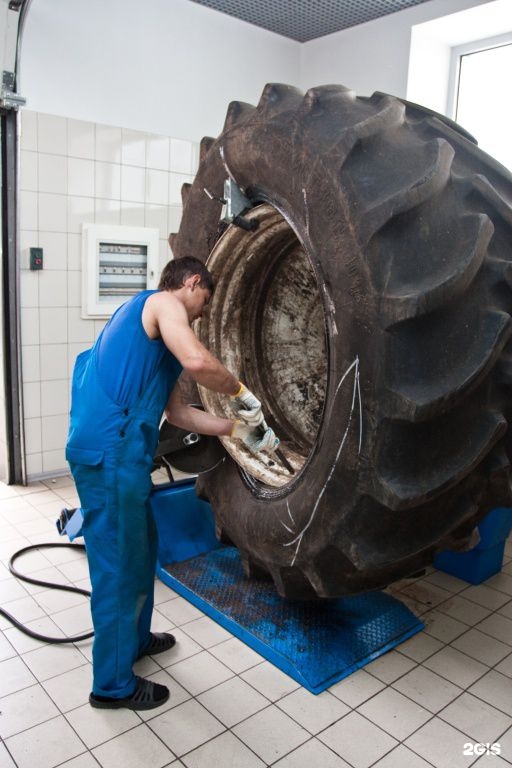
The German company Tip-Top offers motorists in the event of a tire puncture to use the proven fungus with 6 mm caps. Such products can qualitatively eliminate tire damage with a diameter of up to 3 mm.
The rubber cap of the fungus covers the damaged area from the inside of the tire, and the foot covers the puncture area.
Advantages of the set:
Cons of dialing:
The inner surface of the fungus and the outer surface of the stalk self-vulcanize, providing an airtight bond with the rubber compound of the tire.
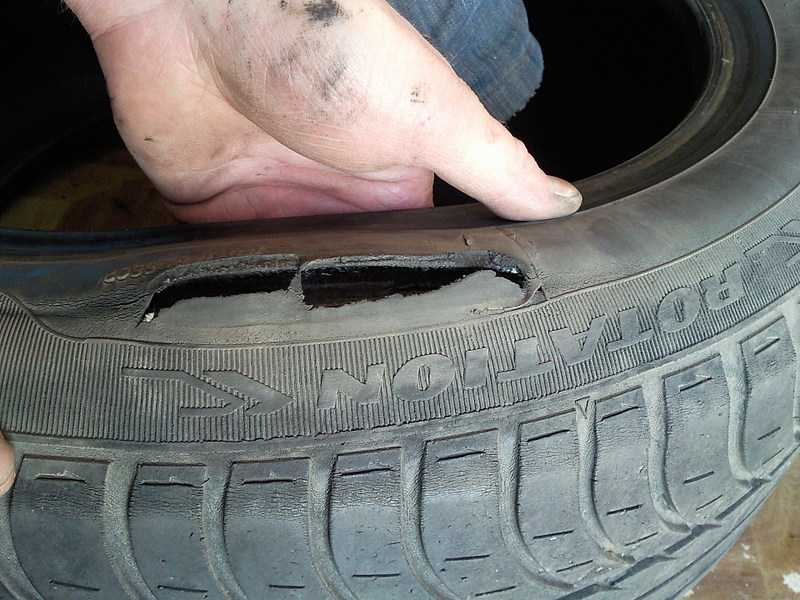
This is the product of another Russian-Chinese company that produces materials for tire fitting. The dimensions of damage to the chamber for repair by this method are limited: no more than 35 mm in the longitudinal direction and 25 mm in the transverse direction.
After treatment of the puncture zone, its surface is degreased and adhesive composition is applied. The patch treated with the same glue is pressed with force to the puncture site and passed over it with a roller. Before sticking it is necessary to remove the protective film from the patch.
Advantages of the kit:
Cons of dialing:
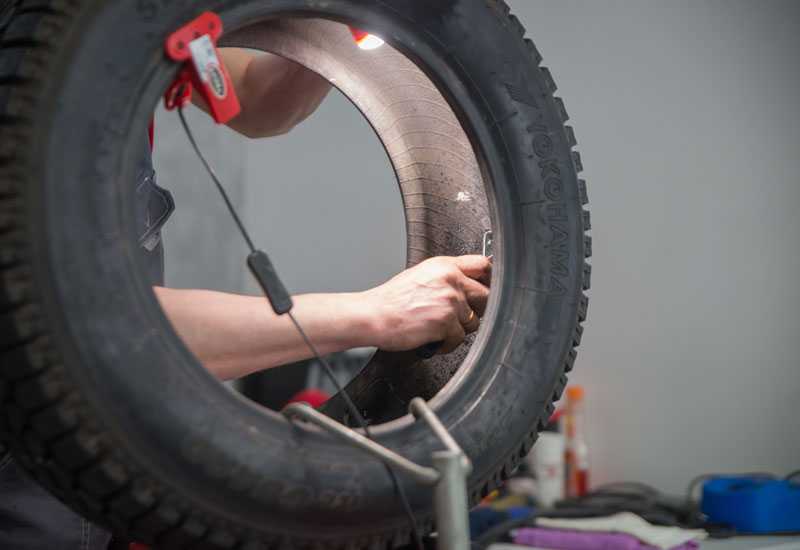
Another tool that helps a car enthusiast to get at least to the nearest service is a patch patch of the German brand Tip-Top 43 by 43 mm in size. They can eliminate micropunctures, minor damage.
Set plus:
Cons of dialing:
Don't let a flat tire put you off your path. Learn how to repair a tire in the field.
Author – Joey Nickisher, OFFGRIDWEB.COM
Translation and adaptation – Artyom Kostin, LASTDAY.CLUB
Several years ago, my colleagues and I conducted a search and rescue operation.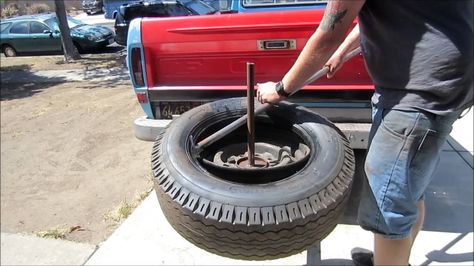 We successfully found the "lost", but halfway out of the forest, we suddenly realized that the wheel of our SUV was punctured. Another transport for the evacuation of the victim was not suitable, and he needed medical assistance urgently. So I had to repair the tire in the field. Happened. The victim was taken to the hospital, and we were enriched by the experience of field repairs. But what would we do if we didn't have the right skills and tools? Do you have them?
We successfully found the "lost", but halfway out of the forest, we suddenly realized that the wheel of our SUV was punctured. Another transport for the evacuation of the victim was not suitable, and he needed medical assistance urgently. So I had to repair the tire in the field. Happened. The victim was taken to the hospital, and we were enriched by the experience of field repairs. But what would we do if we didn't have the right skills and tools? Do you have them?
Therefore, to begin with, let's talk about the simplest and most banal option for “repairing a tire” ...
Yes, some motorists are very lucky and they never had the need to change a flat tire on their own. Others were less fortunate, and they know perfectly well what kind of hemorrhoids it is to change a wheel right in the middle of the road. Worse, perhaps, only to do it in the middle of a dense forest. So, it is worth figuring out by experience how to do it yourself. No kidding, because at least in theory anyone can do it - “ It’s business to jack it up, unscrew the nuts/bolts with a canister, raise the car, remove the wheel, put a jack-up, screw it in, lower it, tighten it… key?”, “How to unscrew the spare wheel?” etc.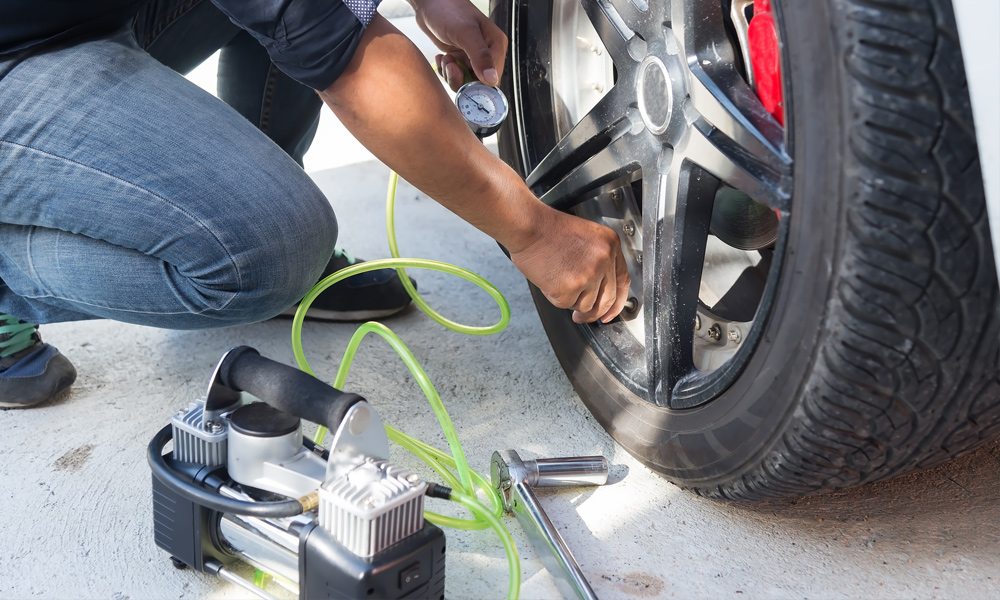
It is better to study and practice in advance than to try to do something in an emergency with difficulty and obscenities. And after you learn how to do it yourself - be sure to teach this to your household and the people you regularly carry in your car - just in case.
In addition to the relevant knowledge, you will also need tools. And, of course, the spare tire itself. Without him, you understand, it is difficult to do anything at all. So, it is worth figuring out where in your car it is stored. And is there any. Spare parts can be located in different places of the car - under the floor, under the seats, in a plastic casing at the back, in the trunk, suspended from the back with cables or mounts, etc.
The latter case is particularly difficult, as the fasteners can only be removed using the special tools supplied with the purchase. In addition, when working with them, you may need to study the instructions. And it is better to do this in a garage or a quiet environment, and not in the middle of a forest. It is also worth regularly checking the degree of inflation of the spare tire and pumping it up if the pressure is low. Keep in mind that many vehicles are shipped with flat tires or repair kits, rather than wheels that are ready to be installed.
It is also worth regularly checking the degree of inflation of the spare tire and pumping it up if the pressure is low. Keep in mind that many vehicles are shipped with flat tires or repair kits, rather than wheels that are ready to be installed.
You will also need a jack to lift the car, a wheel wrench or other wrench that fits the nuts and bolts that hold the wheels. If all of the above is not present, then this is a sure path to disaster. Or - to a long and expensive wait for a tow truck.
The simple wheel replacement algorithm looks like this.

Read the vehicle manual before starting work. The fact is that on modern vehicles there are two main ways to fasten the wheel - using nuts or bolts. And it's better to know in advance.
A mechanical jack (left), which you will find in the trunk of almost every car, despite its not the most convenient principle of operation and small footprint, is an excellent choice for emergencies. The hydraulic jack (right) is compact and robust. Wider bases improve stability, but may be too high for vehicles with low ground clearance.Everything seems to be clear with this, right? But what if the wheel is not replaced?
The first thing to do is fill the flat tire with compressed air. If the leakage rate is low, then this is quite enough to reach the service center. Most often, air compressors powered by a 12-volt power source are used for this. Or - compressed air cylinders of various sizes, ranging from simple CO2 cartridges, which may need several pieces per tire, to large portable cylinders. The most extreme case is a bicycle pump. It is hard, long and not rational if the air flows out faster than you replenish it. Therefore, if the damage is extensive, other methods of repair are needed.
Most often, air compressors powered by a 12-volt power source are used for this. Or - compressed air cylinders of various sizes, ranging from simple CO2 cartridges, which may need several pieces per tire, to large portable cylinders. The most extreme case is a bicycle pump. It is hard, long and not rational if the air flows out faster than you replenish it. Therefore, if the damage is extensive, other methods of repair are needed.
There are various tools and accessories available to help you repair your tire. U.S. Tire Manufacturers Association - U.S. Tire Manufacturers Association (USTMA), has developed its own criteria for such products. They are discussed in the text "Puncture Repair Procedures for Passenger and Light Truck Tires" - "Repair of tires for cars and light trucks." According to these recommendations, you can work with holes not larger than ¼ inch, which are located directly in the tread area (but not on its edge or on the side surface).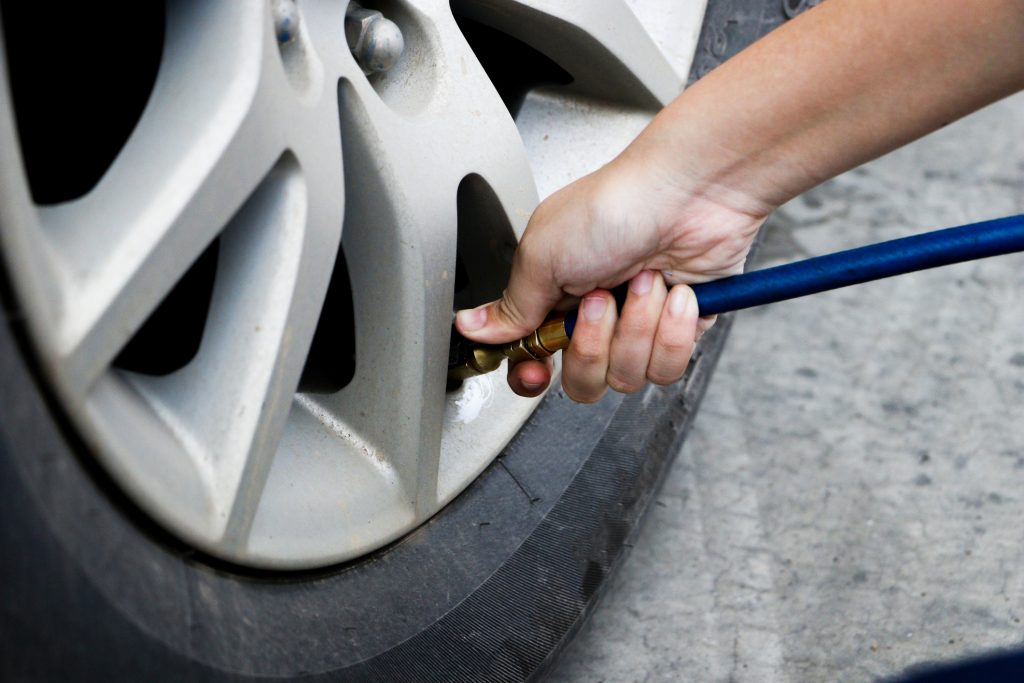 Under normal circumstances, this standard should be maintained, but you may find yourself in a situation where even some tire repair can make the difference between life and death!
Under normal circumstances, this standard should be maintained, but you may find yourself in a situation where even some tire repair can make the difference between life and death!
So, the best tool for repairing a tire is “fungus”, a kind of cork with an internal patch. They are used at service stations. This repair involves widening the hole, plugging it in, applying an activator adhesive and a patch on the inside of the tire.
The average person can install a simple harness patch without removing the tires from the rim. First, locate the location of the damage. Then - remove the debris and the damaging element (nail, screw, etc.). Then, using a spiral awl - a tool that resembles a file or rasp, clean the walls of the hole. Then - install the tourniquet (strip of rubber) on the harness installation tool, (a tool with an eye that resembles a huge sewing needle). Apply glue to the hole and the patch cord, and then push it directly into the hole, leaving no more than a centimeter sticking out. Turn the plug tool and pull it out, leaving the patch in the hole. Wait a few minutes - let the glue grab. If the damage is not particularly serious, this should be enough. This tire repair has been practiced for quite a few years.
Although this is not officially recommended, if the puncture is not sealed, then you can try to insert additional plugs into the hole. In addition, this method should not be used with a punctured side of the tire. However, I myself have seen similar patches on the side surfaces of the wheels of ATVs, tractors and SUVs. But only in really emergency situations. And if you find yourself in such a patch, then, of course, you will have to insert such a patch, but you will need to drive slowly - at the speed of a pedestrian. And only to the place where it will be possible to change the tire normally. This applies to both off-road and the roadway - otherwise the risk is too high that the plug will be knocked out by pressure.
There are many varieties of stoppers, plugs, patches and fungi, but I would single out Stop & Go International. They work on the same principle as similar tire repair fungi, but offer a number of additional benefits:
They work on the same principle as similar tire repair fungi, but offer a number of additional benefits:
You may ask me: “Why any plugs and fungi when you can seal the hole with Fix-a-Flat tire sealant?”. You can, of course, but this is far from the best and most successful option. Yes, sometimes it works, but it has significant drawbacks that interfere with normal use. Let's start with the fact that before the change in the formulation of Fix-a-Flat in 2016, the past mixture, according to the safety protocol of 10/15/2000, was corrosive.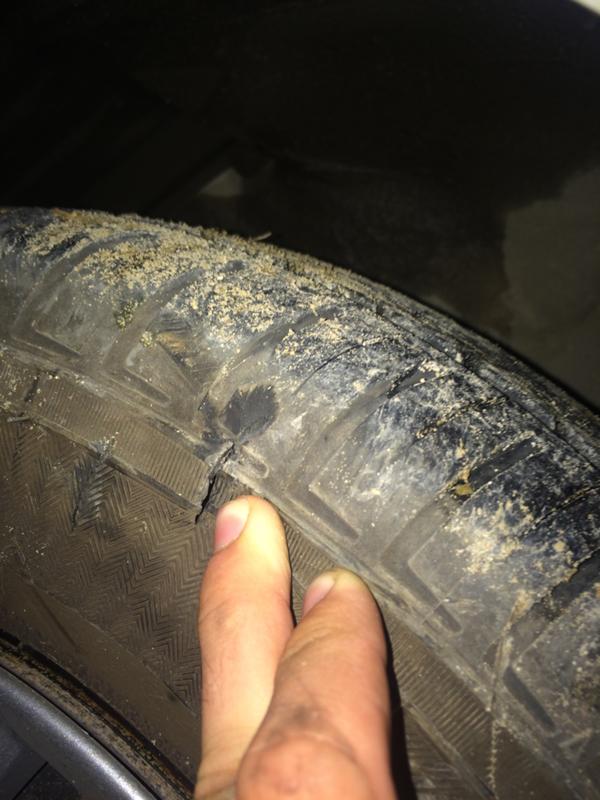 So older Fix-a-Flats have the potential to cause further tire damage and, in severe cases, serious wheel problems.
So older Fix-a-Flats have the potential to cause further tire damage and, in severe cases, serious wheel problems.
Therefore, this method is a quick but temporary solution to the problem. And the chemical sealant should be removed from the inside of the tire as soon as possible. And for this, many service stations charge an additional fee. What's more, even with the new formulation, the instructions still say to remove the mixture after 3 days or 100 miles. Otherwise, problems may begin.
Slime Tire Sealant (which is injected inside the wheel and closes the puncture), and more “traditional” tire repair kits.The old Fix-a-Flat formula contained tetrafluoroethane, heavy aromatic solvents, amorphous polyolefin, various aromatic resins, an inert filler, and a trade secret "proprietary" substance. The new formula contains tetrafluoro-1-propene, glycerin and cellulose. Just in case, check what is written on the can of sealant.
You may also have heard of Slime Tire Sealant, a thick green slurry that could be injected into the inside of a tire to repair minor damage and prevent further deflation. The manufacturer claims that this product is safe for TPMS (tire pressure monitoring system), contains rust inhibitors and lasts for several years. Based on my personal experience, it's true. Tires really last more than one year after such a repair. Plus, it is extremely easy to use - you need to pull the spool out of the valve (the valve through which the wheel is inflated), then - using a special tool, introduce the sealant into the tire. Slime contains glycerin, attapulgite, cellulose and quartz.
The manufacturer claims that this product is safe for TPMS (tire pressure monitoring system), contains rust inhibitors and lasts for several years. Based on my personal experience, it's true. Tires really last more than one year after such a repair. Plus, it is extremely easy to use - you need to pull the spool out of the valve (the valve through which the wheel is inflated), then - using a special tool, introduce the sealant into the tire. Slime contains glycerin, attapulgite, cellulose and quartz.
TireJect Sealant is similar to Slime - this liquid also needs to be injected into the chamber through a valve and is also effective for two years. But at the same time - much more liquid and is available in two versions. "Automotive Sealant" works on sidewall holes and projector punctures up to ¼" while remaining safe on tires, rims and pressure gauges. "Off-Road Sealant" works with holes up to 3/8 inch, which are also located on the side, and with tires that have already begun to rot and let air through purely due to age.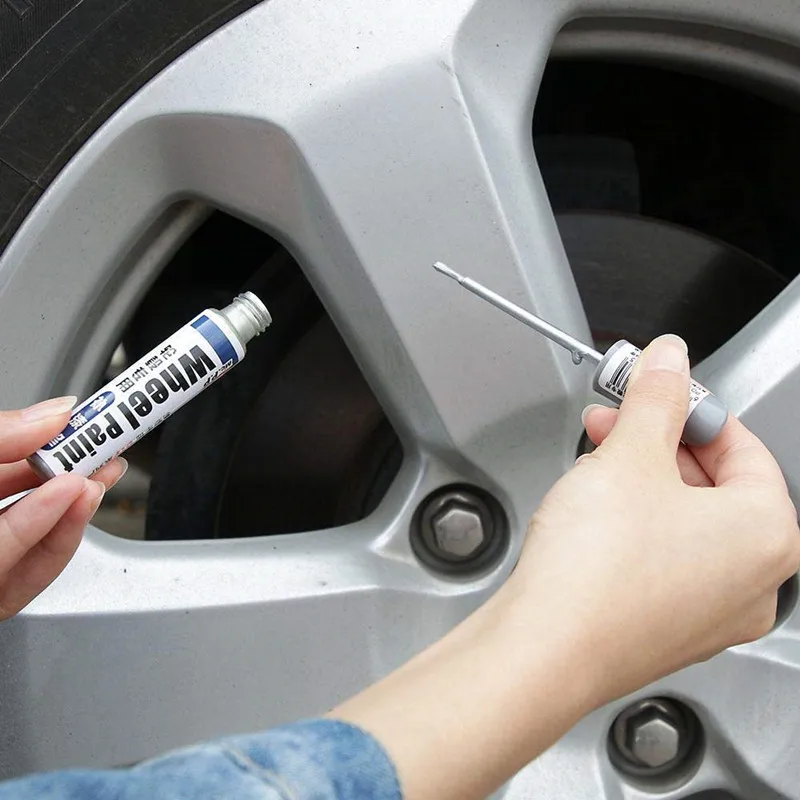 It is made from liquid rubber, sealing particles and armid (Kevlar) fiber. However, it is harmful to pressure sensors. Personally, I tried it on my old land aerator tires that didn't hold pressure for more than two days. It's been 30 days since using TireJect - and they still held air! The main ingredients are propylene glycol and natural rubber latex.
It is made from liquid rubber, sealing particles and armid (Kevlar) fiber. However, it is harmful to pressure sensors. Personally, I tried it on my old land aerator tires that didn't hold pressure for more than two days. It's been 30 days since using TireJect - and they still held air! The main ingredients are propylene glycol and natural rubber latex.
While researching, I came across another tire repair sealant called FlatOut Multi Seal. I haven't used it myself, but I feel it's worth a mention. Just like the two products mentioned above, this is a liquid that needs to be injected into the inside of the wheel through a valve. According to the manufacturer, this substance lasts for 10 years, but is only suitable for off-road tires, as it harms pressure sensors. Multi Seal Pro HD 2500 handles holes up to ¾" and Multi Seal Armor 3500 up to 1 ¼". Such holes, for example, leave bullets on impact. The chemical ingredients in the FlatOut Multi Seal are 50% Propylene Glycol and the rest are branded ingredients in low doses.
My friend was riding a quad bike over rough terrain and blew a tire. The hole was too big for normal fixing methods, and there was no spare tire. What did he do? He sewed up the hole. That's right - he took a thick canvas needle and a thick nylon thread, put a bunch of seams on the hole, placed a patch on the tire from the inside, and then filled everything both outside and inside with activator glue. That was enough to get to the workshop.
In some Third World countries, damage is still being repaired with a torch and pieces of rubber that are melted directly onto the damaged areas. This, of course, requires very skillful hands, but a lot of tires have been repaired in this way. There is also the old "school trick" that allows you to put a flat tire back on the wheel - any flammable aerosol. You inject it in, ignite it, the gas expands, the tire straightens out and back onto the wheel. But we do not recommend that you use this method - it is quite dangerous, as the explosion can tear the rubber into pieces.
This, of course, requires very skillful hands, but a lot of tires have been repaired in this way. There is also the old "school trick" that allows you to put a flat tire back on the wheel - any flammable aerosol. You inject it in, ignite it, the gas expands, the tire straightens out and back onto the wheel. But we do not recommend that you use this method - it is quite dangerous, as the explosion can tear the rubber into pieces.
At the beginning of the article, I said that my comrades and I had to repair a tire during a rescue operation. Of course, we could install a patch or a fungus, but first we would need to find the damage, and then also spend time on repairs. We could have just changed a wheel, but no one had a spare at all.
We could take the tire off and put a new tube in it. But for this it would be necessary to find a wrench, a jack, lift everything, disassemble the wheel and replace the chamber.